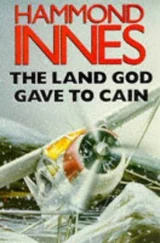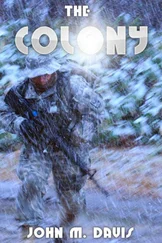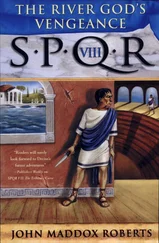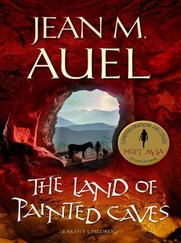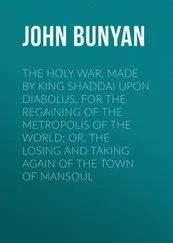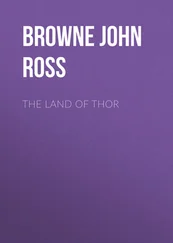It was two o’clock the following afternoon when McQuade drove into Swakopmund, after returning Jakob to his kraal. He parked outside the old municipal buildings, under the palms, and went into the information bureau. A coloured woman came forward. ‘ Guten Tag .’
‘Can you advise me please?’ (People like to be asked their advice) ‘I am writing about Swakopmund during the war period. Is there a municipal archive I can research in?’
The lady said, ‘Only the Sam Cohen Library.’ She produced a glossy brochure and opened it at the map. ‘Here. And the Public Library’s here.’
McQuade circled them. ‘How would I find out …’ he waved his hand, ‘… how many dentists there were in Swakopmund in 1945, for example.’
‘Maybe at the library.’
‘And do you happen to know what hospitals there were in 1945?’
‘Only the Antonius Hospital. Across the street there.’
‘Thank you.’ He went downstairs, back into the glaring sunshine.
The Antonius Hospital was an attractive old German building. He walked into the small foyer. A number of black women were sitting on chairs with infants. On the walls were government posters about nutrition, infant care, family planning, and the smiling people depicted in them were all an attractive shade of brown. McQuade went to the door marked Reception. A black woman in a white smock was sitting at a typewriter. ‘Good afternoon,’ he said in Afrikaans, ‘is this where all the records of patients are kept?’
‘Yes, sir.’
‘Do you have the records for 1945 here?’
The woman looked nonplussed. ‘No. In those days this was a German missionary hospital. It was later taken over by the government.’
‘Do you know where the old missionary records are?’
‘The missionaries took them away.’
‘And where are the missions’ headquarters now?’
‘In Windhoek, maybe. Or maybe in Germany.’
McQuade thanked her and left the hospital. Well, he’d drawn a blank there. He walked towards the main street, Kaiserstrasse.
The public library is in the old Woermann-Brock Shipping Line building, built in Bavarian style around a large open courtyard. McQuade asked the librarian what books she had on German history of Namibia in general and Swakopmund in particular during the war period. ‘Giving me details like how many dentists and doctors the town had in those days, et cetera.’
The librarian was a cultured, elderly German lady. ‘For that you must go to the Sam Cohen library. It is dedicated to the local history. Mr Cohen made a great deal of money out of Swakopmund and built the institute out of gratitude. Meanwhile, sit at a table and I’ll bring you what books we have.’
He found a table in the reference section. The librarian arrived with a pile of books.
The topmost book was by a Professor du Passani on the constitutional history of South West Africa. McQuade flicked through it. It seemed erudite stuff, more than he needed.
The next book was written by Adolf Hitler himself, Mein Kampf . McQuade put it aside. The next was a large tome about the Nuremberg Trials. He resolved to read it one day but it seemed hardly relevant to Namibia. However, a chapter had been marked by a pencil line, so he speed-read it. The gist of it was that many people challenged the legality and the morality of the Nuremberg Trials. They were without precedent in history. Before these trials, there was no such crime as ‘crimes against humanity’, a legal concept that was invented only after the war, so it could not legally be applied to deeds perpetrated before its conception. Furthermore, it was argued, the court did not have jurisdiction to hold the trials. Only a sovereign state had such power and the Allied forces were not a sovereign state, only an occupying army: so only the state of Germany itself had the legal power to try these ‘criminals’. Furthermore, was it morally right to hold these ‘criminals’ responsible for obeying orders? McQuade skipped the rest – he had no patience for such arguments. There were photographs, however. A photograph of the principal war criminals in the dock at Nuremberg: Hess, Göring, Dönitz, Ribbentrop, Keitel, Kaltenbrunner, Speer and others.
Some of the names he knew as legendary villains of the war, others meant nothing to him. It struck him how ordinary these notorious men looked in civilian clothes, stripped of their awesome uniforms. There was a photograph of the gallows, specially built in a gymnasium for the executions. A photograph of the hangman, Master-Sergeant Woods of the United States Army, preparing a noose. A photograph of the bodies after the execution, lying in a long row on top of their coffins: some had blood coming from the eyes and nose. A macabre but interesting detail, McQuade learnt, was that the condemned were not told until a few hours beforehand that their executions were ‘imminent’, so each day they woke up not knowing whether it was to be their last. Furthermore, they were hanged one at a time, so once the executions started, some had a long wait before their turn came. There were photographs of concentration camps, the likes of which he had seen before, shocking pictures of emaciated people behind barbed wire, trainloads of Jews lined up on railway platforms outside concentration camps undergoing selection by SS doctors for the gas chambers and slave labour, crematoria chimneys belching smoke, emaciated corpses filling open graves.
It was shocking, but it was distant history to McQuade and had nothing to do with the modern Germans whom he knew and liked – except for what he had seen three nights ago on the Schmidt ranch on Hitler’s birthday, and what Jakob had told him about the harbour at Lüderitz. If Jakob’s story was true, the Second World War was not the first time the Germans had used slave labour.
The next book was a pictorial history of Hitler’s rise to power. It was vaguely familiar stuff. The goose-stepping armies on parade, the gleaming jackboots, the square helmets, the phalanxes of trucks, the armadas of battleships, the skies dark with Messerschmitts with the cross emblazoned on their wings. Here were the swastikas, flying, draped dramatically on walls, and the massive crowds, right arms out rigid in the Heil Hitler salute – you could almost hear the roar coming up out of the pages. McQuade had seen such pictures before and he would not have spent time on them now, but for what he had seen on the Schmidt ranch.
God, the whole thing gave him the creeps. He thrust the book aside and picked up the last one.
It was called The Hoax of the Twentieth Century , by Arthur Butz. McQuade stared. These were Helga’s words three nights ago when he had said that Hitler had murdered six million Jews. ‘ The hoax of the twentieth century! ’ she had shrieked before she hit him. McQuade turned to the back cover. The publisher’s blurb read:
Dr Butz gives the reader a graduate course on the subject of the Jews of World War II Europe – concluding not only that they were not virtually wiped out; but, what’s more, that no evidence exists to date to confirm that there was ever any Hitler government attempt to do so … He focuses on the post-war crimes trials where the prosecution ‘evidence’ was falsified and secured by coercion and even torture. He re-examines the very German records so long misrepresented; he critiques the European demographics which do not allow for the loss of the ‘Six Million’; he reevaluates the concept and technical feasibility of the ‘gas chambers’ with some startling conclusions, and separates the cold facts from the sheer tonnage of myth and propaganda …
McQuade thought, God … This was what Helga, an educated woman, believed? He flicked open the book. Many passages had been underlined. He speed-read a page which had been flagged:
Читать дальше


